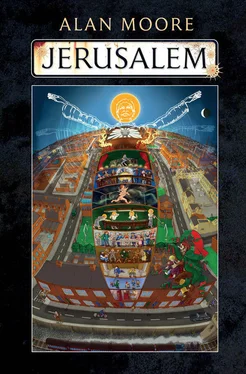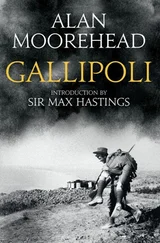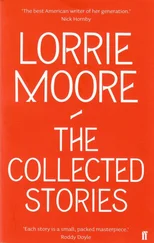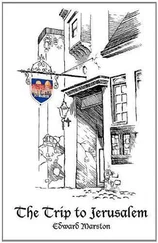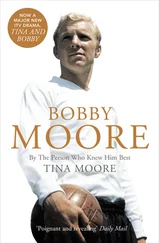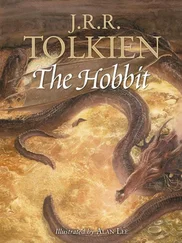His sister, it turned out, hadn’t even made it as far as the nursery door before being waylaid by her adoring or deploring public. She was further off from it, in fact, than Mick himself, leaning against the table’s further, eastern side and glowering at her handiwork like a displeased Jehovah, albeit one who’d swapped his beard for lipstick, though each to their own, of course, and nothing wrong with that. More disconcertingly, she was flanked by the two elderly ladies Mick had noticed earlier and who’d been slipping in and out of view throughout the afternoon. One stood to either side of Alma as she loomed over the papier-mâché district, hunching like a monstrous slagheap with more slag to it than usual, ready to engulf the shrunken Boroughs in a devastating avalanche of turquoise fluff and bitterness. The old girls, spider-webbed with wrinkles and their exposed flesh the mud of a dried reservoir, seemed to be taking turns to stoop and mutter their opinions into alternating ears of the preoccupied and frowning artist, though Mick doubted that the advice of whichever woman was engaging Alma’s deaf side would be implemented. With her wrecker’s-lantern eyes fixed irremovably on the diminished alleys of her reconstructed world his sister didn’t look at either of the women while they spoke to her, encouragingly by the look of things, but would acknowledge their remarks with grave nods of the head. Incredibly, it seemed that not only was Alma for once listening to somebody’s opinion of her work, but that she also appeared to agree with them. The two were evidently loving every minute of their audience with the subdued and uncharacteristically compliant artisan. From deep within their creased papyrus sockets their eyes gleamed and sparked, hobnails on cobbles, as their wizened heads dipped one after the other to their whispering, well-mannered vultures pecking at Prometheus’s liver. Though what they were saying to his sibling was impossible to hear above the hubbub of the gallery, Mick thought it looked as though they were administering an excited pep-talk, urging Alma to stick with her vision and to take it further, carrying it onwards. Something like that, anyway. The biddies pointed jabbing crab-leg fingers at the model on the table, with the one on Alma’s deaf right side repetitively mouthing something that looked like “keep on” or “go on”, something with two syllables like that. And Alma nodded as if she were heeding counsel that was irrefutable, taking career instruction from two dotty-looking termagants who ninety minutes previously she hadn’t known existed. Still no closer to an understanding of his sister than he’d been, aged seven, when she’d shot him with that blowpipe, Mick turned back to Chain of Office to continue his inspection.
Having now recovered from the shock of realising that he was this ultimate exhibit’s subject, he was able to take in the painting’s other content, notably the splendid robe in which his sister had seen fit to deck her central figure. Hanging folds of heavy velvet were embroidered with exquisite threads of gold, a gilded crazing that resolved at a few inches from the picture’s surface into a meandering treasure-map of the terrain that Mick was born from. It was one of those charts that had three-dimensional bits bulging out from it, of which he was always unable to recall the name. He could see overhead delineations of St. Andrew’s Road and Freeschool Street, Spring Lane and Scarletwell as plunging pleats in parallel and Doddridge Church a decoration on the bias, burial ground compressing as it gathered to the pinch-points. It occurred to him that in the raised-up buildings and projections of a vanishing cartography, a bit like Alma’s problematic Boroughs diorama, she’d contrived this last piece to reprise all of the exhibition’s other works in small. He eyed the piece, squinted the gaud, and saw that his ennobled likeness sported tiny glued-on snail shells as links, one mottled spiral badging either cuff. He was absorbed in these calciferous adornments, trying to establish if they still housed mollusc occupants, when he heard the distinct Pacific cadences of Alma’s pal Melinda Gebbie raised above the background susurrus, and everything kicked off.
“Alma, you fucking asshole, don’t you fucking dare!”
Mick turned, from only idle curiosity, and found himself confronted by the single image from this viewing that he’d take away with him, the solitary tableau that was genuinely unforgettable. His sister, with a blankness of expression that was either innocent or guilty to a point past caring, saint or serial murderer, leaned forward over Marefair and Saint Mary’s Street, reaching past Castle Street and across Peter’s House to Bath Street. The old ladies huddling behind her hugged each other and performed a clumsy, hopping little dance. Lucy Lisowiec’s enormous eyes prepared to fire themselves across the room, accompanying her rising siren wail.
“Almaaaaaaa!”
Pressing a wavering tongue of blue and yellow from the flint-wheel of Mick’s lighter, Alma let it taste the simulated birdshit caked around the rim of her scaled-down Destructor. More-ish, evidently. Dribbling incendiary frills of indigo poured down the lampblacked chimney tower to its base with startling rapidity, sending up acrid and authentic billows of particulate towards the ceiling-mounted sensors as they did so. It all burned so fast, being constructed wholly from materials designed to do just that, and in his sister’s dawning look of apprehension it appeared that even she was unprepared for the appalling pace of the toy-town calamity she’d just unleashed.
A spreading gorse of conflagration engulfed Bristol Street and its environs, with the bijoux fever-cart and centimetre-high mare towing it into the mouth of Fort Street parched to curling smuts and gone upon the instant. Arson reflux scorched the narrow gullet of Chalk Lane and spewed annihilating riot-bile down Marefair, the anachronistic witch-hat turret on Black Lion Hill shrivelling unrepentant at the stake and twisted round with shifting scarves of gold. Infernal tributaries sluiced from long-gone Bearward Street to flood the Mayorhold with combusting vapour, tromp l’oeil sweetshop windows disappearing into light before the flickering translucence climbed the razor-cut of Bullhead Lane to Sheep Street, where ignition moved like scrapie through the paper flock. Hot orange devils swarmed on the crusader church, unravelling its steeple into sparks and levelling the thick-walled round down to a howling mouth red as a branding-iron, a blazing torus, pinkie ring of an apocalyptic angel. Mercy, bright and cauterising, stroked the wounded neighbourhood. In Marefair, Cromwell’s bunk at Hazelrigg House was made immolate among the millenarian tinder, shaved skulls you could strike a match on, cavalier plumes smouldering on pinpricked cornices. From the charred stump of Bath Street’s smokestack, searing ripples spread through the flea-circus district in dilating sapphire hoops, as from a shooting star fallen into a petrol pond. Incineration danced on Broad Street and Bellbarn, flash-vanishing Salvation Army forts and suffering no barber’s pole that it remain unlit. The Rizla laundry flapped like phoenix wings in Greyfriars’ central courtyard, damp with drizzled flames, while all along the crisping terraces six dozen public houses called last orders and submitted to a harsher temperance. Saint Elmo flirted with the upper reaches of Saint Katherine’s high-rise, jumped between laboriously fashioned television aerials on Mary’s Street in a peak-time transmission, sentimentally retracing the trajectories of a Restoration predecessor, and the martyring Niagara spilled down Horsemarket dragging a bridal gauze of choking fume behind. Cremating fancywork writhed briefly on Saint Peter’s architraves. Zero-gage holocaust accomplished in mere seconds an erasure over which the Borough Council had deliberated for just shy a century, deleting cobbled histories in its sheathing Catherine-wheel spray, no west wind this time to ensure that only the torched gloveries and milliners of Mercers’ Row or thereabouts would ever be regenerated. The short reach of houses on St. Andrew’s Road from Scarletwell Street to Spring Lane became an ashen Rothko bad day, by some fluke of thermal whimsy sparing only the Monopoly-sized premises at the line’s south extremity. Boys’ clubs and bookmakers, cottaging-friendly lavatories and corner dives were caught up in a pyroclastic flow from Regent Square down to the foot of Grafton Street, and Marjorie Pitt-Draffen’s dance-school on the current site of Alma’s exhibition spouted rolling white clouds from its open door in microcosm of the building it was modelled on and situated in. Sharp to the sinuses and tear-ducts, these at least elicited a lachrymosity that the more gradual demolitions of some several decades had failed to provoke. Fast-forwarded there on the tabletop a precinct of the heart was firestormed to oblivion in facsimile, its final music the repeated shrill of panicking detectors.
Читать дальше
